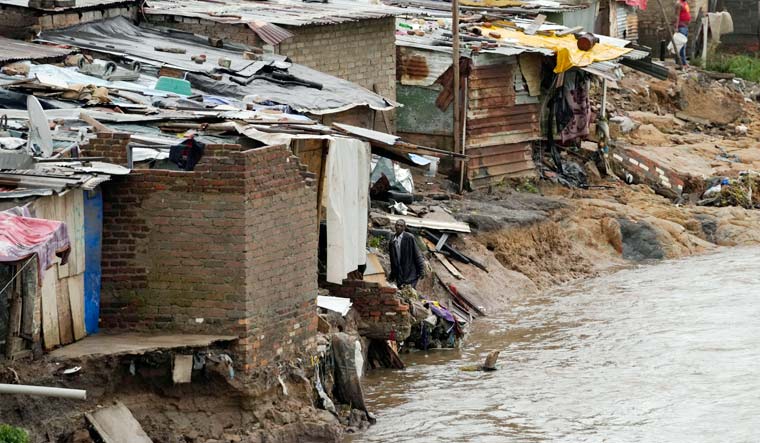The South African government has declared a state of emergency over severe flooding in various parts of the country following non-stop rains for the past week, days after the government announced 'State of Disaster' over electricity crisis in the country.
A national disaster may be declared by the Minister of Cooperative Governance and Traditional Affairs where disastrous events occur or threaten to occur in more than one province.
The National Disaster Management Centre (NDMC) has, in terms of Section 23 of the Disaster Management Act, classified the impact of current, above-normal rainfall in various parts of the country with Mpumalanga and the Eastern Cape provinces as the most affected as a national disaster, the Presidency said in a statement on Monday.
This followed the declaration of a State of Disaster last Thursday as South Africa faces large-scale blackouts with embattled state-owned electricity supplier Eskom unable to meet demand following years of rampant looting and unable to finance its operations.
Seven of South Africa's nine provinces, including the economic hub of Gauteng province, have been severely impacted by the incessant rains.
The national state of disaster enables an intensive, coordinated response to the impact of floods that are affecting Mpumalanga, the Eastern Cape, Gauteng, KwaZulu-Natal, Limpopo, the Northern Cape, and the North West provinces.
Taken together, these conditions demand the provision of temporary shelters, food and blankets to homeless families and individuals and the large-scale, costly rehabilitation of infrastructure.
National entities, including the South African Police Service and the South African National Defence Force, may be required to play a role in the response to the disaster, the Presidency said.
The NDMC said it had received reports ranging from flooded homes, vehicles swept away by floodwaters and overflowing dams and sewerage facilities, to the loss of basic infrastructure and damage to roads, bridges and a Limpopo hospital.
Farmers have suffered crop and livestock losses, and anticipate further losses as the South African Weather Service (SAWS) has predicted that the current heavy rains will continue for the last two months of the South African summer.
These conditions have been brought on by the La Nia global weather phenomenon which occurs in the Pacific Ocean but impacts a country like South Africa with above-normal rainfall, it said.
President Cyril Ramaphosa expressed his gratitude for the response from non-governmental organisations and community-based structures that have rallied to the call to assist the government in addressing the situation.
The bad weather has also impacted many businesses and homes that have come to rely on rooftop solar energy for power amid the crisis, as the lack of any sunshine for days on end does not allow these systems to be recharged.
Eskom has implemented load shedding that leaves parts of the country in rotation without power for up to three sessions of several hours daily.





